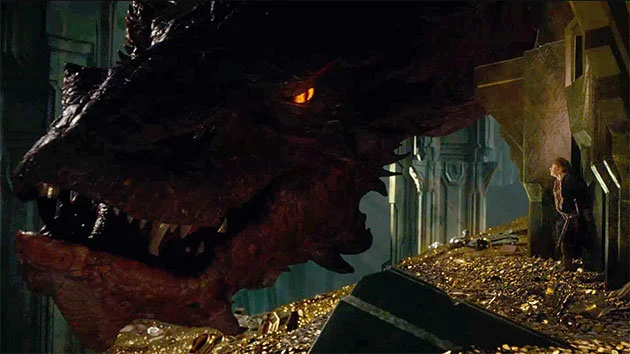As the year finally comes to a close, Peter Jackson once again owns December with the success of The Hobbit: The Desolation of Smaug. And it’s been a great year for Benedict Cumberbatch too, especially considering he’s not only played Khan in Star Trek Into Darkness, but he’s also brought Smaug to life with the help of motion capture.
Joe Letteri is the FX master who helped bring Smaug to life, and he also worked on the Lord of the Rings trilogy and King Kong for Jackson. He told the L.A. Times it took twelve artists to bring Smaug to life, and as Jackson told the Times, “Ultimately, people won’t remember how many teeth [Smaug’s] got, they won’t remember what color he is, how big he is – they’ll remember his character, his personality.”

And indeed, this is what Letteri concentrated on with Cumberbatch when he played Smaug. “We played with a lot of different kinds of body language, and we presented these different [options] to Peter.” As far as animating Smaug, “We were really fortunate that the dwarfs built this treasure hold that was big enough for a dragon to movie in (laughs). That made our life easier, somewhat.”
Letteri was asked about 48 frames a second, which he said in some ways worked in favor of the animation, because movements can be more subtle at that frame rate. “You can fine-tune lip dialogue and eye movements. On the first movie we were able to use that a lot for Gollum, on this film we were able to use that a lot for Smaug.”
Monster FX have certainly come a long way, which is great because if a creature isn’t convincing, the whole movie can go down the drain. So it’s great that with today’s technology we can believe that dragons exist, or at least we can find them more entertaining than ever.






